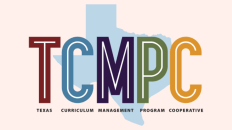The Texas English Language Proficiency Assessment, known as TELPAS, plays a major role in evaluating the English language proficiency of emergent bilingual (EB) students in Texas. Aligned with the Texas English Language Proficiency Standards (ELPS), TELPAS assesses students’ progress in learning the English language. The testing window for TELPAS typically runs from mid-February through late March. In this blog post, we will share five key action items to help you plan and prepare for TELPAS effectively.
1. Start at the Beginning
It’s essential to kick off your TELPAS preparation at the start of the school year. While the official testing window begins in mid to late February, language acquisition is an ongoing process. Waiting until just a few days or weeks before the test to incorporate language domains into your lessons will likely be too late. Start early to ensure seamless language progress throughout the year.
2. Know the Test and Your Students
Familiarity with the TELPAS test is crucial for effective preparation. This assessment evaluates all four language domains, and for students in grades 2-12, it is administered online. Younger students’ assessments are holistically rated. Take the time to study the test blueprint, understand the types of questions asked, and even take the practice test yourself. Early in the year, get acquainted with the test details to seamlessly integrate relevant content into your lessons. You can find more information about the TELPAS blueprint and rubrics on TEA’s website.
Equally important is understanding the proficiency levels of your EB students. This knowledge will help you scaffold your instruction to support their language acquisition. If you’re unsure about where to find this information, reach out to your district’s Multilingual Team for access to student data.
3. Let’s SWIRL!
Incorporate the SWIRL protocol into your instruction. SWIRL stands for Speaking, Writing, Interaction, Reading, and Listening—a protocol designed to ensure that all language domains are integrated into your lessons. Not only does it enhance student agency, but it also makes your lessons more engaging, leading to increased student participation. The SWIRL protocol provides a fresh perspective on the ELPS and how to incorporate them into your lessons. If you’re interested in discussing this further or bringing it to your district, please email Ana Segulin.
4. Incorporate Technology
For most grade levels, TELPAS is administered online, requiring students to record their answers. It is essential for students to feel comfortable with recording themselves before taking the test. Numerous free apps, such as Flip and Padlet, allow students to practice recording. Additionally, students will need specific hardware for the test, such as keyboards and headsets with microphones. Make sure they are familiar with these tools and know how to use them effectively.
5. Foster Student Agency Through Data Talks
Help students understand their proficiency levels and set goals for improvement. Engage in data talks with students, where you can show them their current proficiency level and what they need to achieve to progress to the next level. Data talks are particularly valuable for advanced students who may not receive direct ESL support but are part of a Content-Based Language Instruction (CBLI) setting. These discussions empower students to take ownership of their progress and achievement plans.
By implementing these five key action items to help you prepare for TELPAS, you can establish a structured and organized path to sustained language acquisition, resulting in significant student growth. If you’re ready to begin your TELPAS journey, join us for our Best Practices for TELPAS Preparation workshop on November 14, 2023, at ESC Region 13. For more helpful tips like these, be sure to visit our blog page.

Ana Segulin
Coordinator of Multilingual Support, Title III & Migrant Ed





Add comment